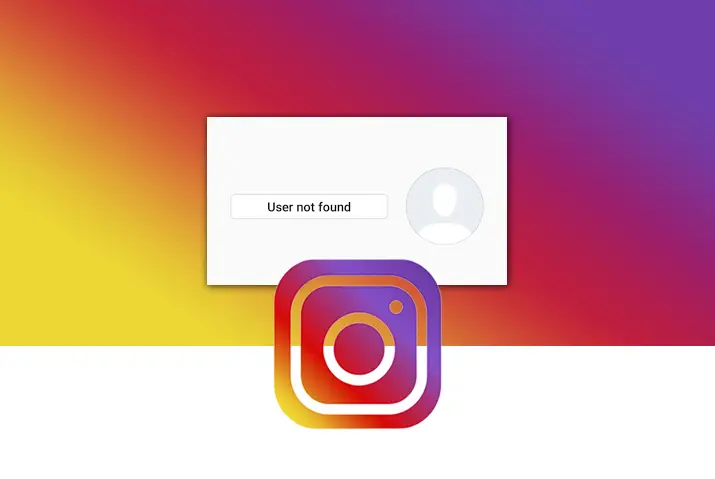CMOS stands for Complementary Metal Oxide Semiconductor (CMOS). It is also known as Complementary Symmetry Metal Oxide Semiconductor (COS-MOS).
Most of the time, you will find that your computer or laptop is showing the wrong date and time. As a user of technology ourselves, we understand the difficulty it might create in your regular tasks. This is the time when you will need to change the settings of BIOS or clear CMOS.
For the problematic situations where the laptops or computers are not booting, what is it that I should do? The answer is simple; you need to clear your CMOS and BIOS using the three types of unique methods mentioned in the below subheadings. The scenarios when you will need to apply these points are explained respectively.
What is CMOS?
To understand the CMOS functionality, first, you need to know what BIOS is. BIOS, namely the Basic Input Output System, is a system that executes hardware compatibility quickly when the system boots up. It might also improve the hardware settings for you.
So, where do these BIOS settings and configuration details get stored? This is where CMOS comes into limelight.
CMOS is technically a non-volatile memory that stays on your motherboard and, as mentioned above, manages your BIOS settings, and configuration details. On top of that, it remembers and arranges the system date and time.
Moreover, you can call it a non-volatile BIOS memory or CMOS memory or even CMOS battery. Since it is non-volatile, it will remember and manage the aforementioned things even when the system is off.
If your device is not booting properly, you might be encountering a problem with your CMOS. Similarly, if the date and time are always fluctuating, it is time to reset the BIOS or clear CMOS.
How Long Do CMOS Batteries Last?
Your CMOS battery particularly consumes less battery overtime. This is why they last long enough for you to be carefree.
An average CMOS battery takes only the power of a millionth of an amp, which makes it last for 10 years approximately.
What affects CMOS batteries is the regular usage of your device. Even though it is a non-volatile memory and consumes a small amount of charge, it still needs to store the charges for future use.
Hence, when you do not use your device for long, it might stop working or get jammed.
When Do I Clear My CMOS?
As mentioned earlier, regular CMOS has a lifespan of 10 years approximately. It is a known fact that whenever the problem occurs, we need to solve it.
The situations in which you might need to clear you are CMOS is explained in the process of how you do it.
There are three general ways to clear your CMOS. In situations where your system date and time are a little fluctuated or not running, you can consider clearing your CMOS.
Additionally, this also applies when you notice that the system is not booting or accepting your motherboard.
How Do I Clear CMOS?
Now comes the essential part when you learn how to to do the actual job. Many sites might provide you different ways of how to clear your CMOS, but they do not consider the fact that you might not know which method to choose and when.
We surely understand your pain due to which we have come up with 3 different methods, and when you need to use those methods.
Clearing CMOS Using the Jumper Method
Sometimes when you buy a device, the owner may have made some changes to the motherboard to make changes to the settings. In such cases, you might need to reset your BIOS and clear your CMOS through the jumper method.
When to Clear CMOS Using the Jumper Method?
Have you ever been stuck in a situation where the system will start, but nothing will show up on the screen? It can be a nightmare. You might try updating BIOS, restarting your device all over again. However, all of these options will only disappoint you.
Moreover, the manufacturers or even sellers might set the settings a way that most people would want. In contrast, if you feel the hardware incompatibility issues striking you, there is a good chance that clearing your CMOS will act as a lifesaver.
How to Clearing CMOS Using the Jumper Method?
Here is what you should do for clearing CMOS using the jumper method.
- Turn off the power of the device. Consecutively, open the system and locate the motherboard.
- Check out the manual of the motherboard and find out the jumper. Majorly, You will find the jumpers near the CMOS battery. If your motherboard is small, you might find it on the end of the motherboard on the right side. For ease, look for the CLEAR CMOS label.
*Note: It can be labeled as CLRPWD, PASSWORD, or CLEAR. - Check which type of jumper you have. It might be two pinned or three pinned.
- For the two pinned jumpers, you just need to pick up the blue plastic jumper placed on the pins and remove it.
- Similarly, for the three pinned jumpers, you need to remove the plastic jumper from the two pins. Let’s say the points you removed the jumper from were one-two. If so, place it in the two-three position. After some minutes (one to five minutes should be enough), place the jumper back to its original place.
- Turn the computer back on.
- Check if the BIOS settings are reset. An easier way to know if the CMOS has cleared or not is if the system password is no longer required.
- Turn off the computer and put the jumper back on the pins. You can now be unbothered by the CMOS clearing each time you restart your device.
Also Read: Best Thermal Paste For PlayStation 4 Pro
Clearing CMOS Using the Battery Method
This is a more obvious way of clearing your CMOS. For this, you will require reseating the CMOS battery.
Though it might be a hectic task for some devices as you have to open up the back cover in order to do so, it is still an easier way if you are unable to locate the jumper.
How Does It Work Then?
The battery is the main source of CMOS’s power. When you disconnect the battery, you actually remove the power that connects your BIOS settings offline.
You can then change them to default automatically when you reconnect the battery.
For Desktops
- Turn off all the devices connected to the computer and plug out from the main AC source. After that, take off the computer cover.
- Locate the battery on the board. In this case, the battery is similar to the standard ones you would find in toys or conventional watches.
Note- The batteries might be placed horizontally or vertically, it might also be connected to the board with a hanging wire. - Detach the battery. In case of a battery placed vertically or horizontally, simply pop the battery out. For the cases of connection on board with a hanging wire, unfasten the wire.
- Now it is time to wait for some minutes, one to five minutes. Then, place the battery back in. Make sure you put in the right orientation of +ve and -ve.
- Open the computer and plug all devices back on the computer.
For Laptops or Tablets
- If laptops or tablets are your issues, remove the battery, too, along with making sure the laptop is not plugged to the charger. Then, Open up the small CMOS battery panel and locate the battery on the board.
- Most laptops have a hanging type battery with a 2 pin white connector. Make sure you remove the white connector.
- Wait patiently for a few minutes as your problem is about to vanish. In a similar fashion, but the two pins white connector back in.
- Close the battery panel. After it, join or reattach the laptop or tablet’s battery.
- Turn on the computer.
Reset BIOS Setting Internally
When to Reset BIOS Settings Internally?
If you have changed your BIOS settings, but you don’t know what you have done, it is a sign that you have to change or reset your BIOS settings internally.
This method might come in handy when you have not opened your device for a long duration of time. Even though CMOS is a non-volatile memory, which means that it can work even when the system is not powered on, it still needs some stored power to keep it running.
This is probably the easiest and fastest way to solve your problem. What’s more? You just need to enter the BIOS utility setup and then reset it to factory defaults.
How To Reset BIOS Settings Internally?
Here are some steps of how you can reset BIOS settings internally to clear your CMOS.
- Restart the device by clicking on start, arrow near shut down, and restart.
- When the startup screen appears, you can find (press any key to enter setup) option at the bottom line of the screen. In a few seconds, the option will disappear. Before it does, make sure you click the button it says. If you are not able to do so in the stated time, you will need to restart the device again.
Pro tip: You can start pressing the setup key as soon as the device restarts if you know the key. - Look at the computer’s manual or reconfirm from the online support page to know which key triggers BIOS settings. Most devices use Del+ F2. Other keys that may work are F2, F8, Tab, or Esc.
- The BIOS settings will load as soon as you hit the setup key. You might have to wait for a few moments.
- If the password prevents you from entering into the BIOS settings, try other methods mentioned above. If not, the BIOS settings menu will show up.
- Find the option that will help you reset the BIOS to default. You will find it in the Exit tab.
Note: You can also see it as “Reset to Default,” “Factory Default,” “Setup Defaults.” The name might be something else. However, you now have the basic idea of what it usually shows up as. - Select the “Load Setup Defaults” option—press ENTER. You can navigate the keys through arrows on your keyboard. As mentioned above, the words may be unique for each BIOS.
- Your application will start resetting your BIOS as soon as possible.
- Select save changes or confirm your selections. You will now have to exit the BIOS, and the device will reset automatically.
- If you want to change your BIOS settings, you will have to reboot your device again.
In Which Devices Do These Methods Apply?
These methods are applicable to Intel devices. We have mentioned the possible solutions that will assist you in choosing the best option.
Furthermore, we have mentioned how you can deal with the problems in desktops, laptops, and tablets.
Though the functions might be different from BIOS to BIOS, we have explained it in an easier way so that most parts of the devices are covered.
Last Words
At last, we want to share that clearing CMOS will help you set the BIOS functions into default settings. This will surely help you to turn your device’s screen on and boot properly.
Not only this, but you will also be free from the problems of confusion regarding what to do. We understand it is a headache to try restarting and resetting your device again and again but failing miserably.
That is why we have added three different measures of how you can clear your CMOS or reset your BIOS settings as well as when to do what. We hope it was helpful to you and that you can apply the above methods.
Now you do not have to worry about your project stopping in the middle of resetting the clock time and again.
Though we refer you to change the CMOS battery is older than five to ten years since they wear out with their age as well!

![How To Clear CMOS To Reset BIOS Settings and Why [Updated 2020]](https://onlinehelpguide.com/wp-content/uploads/2020/09/How-To-Clear-CMOS-To-Reset-BIOS-Settings-and-Why.webp)



